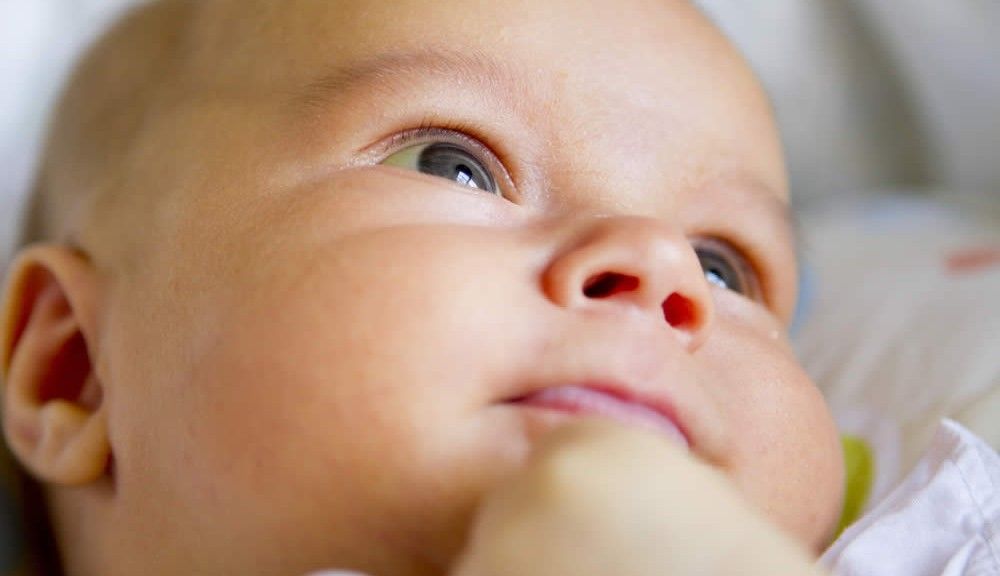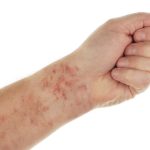
Previous
New Link Between MSG and Fatty Liver

Next
For Your Liver’s Sake: The Best Times to Drink Water
What You Need to Know About Jaundice
Learn all about jaundice – what it is, how it happens, and what conditions can lead to this yellowish discoloration of the skin and whites of the eyes caused by abnormally high levels of bilirubin in the bloodstream.
Most people understand that jaundice is a yellowing of the skin. However, understanding why jaundice occurs gives people living with liver disease the information they need to better monitor their health.
What Is Jaundice?
Jaundice is the yellowish discoloration of the skin and whites of the eyes (sclera) caused by abnormally high levels of bilirubin in the bloodstream. A mildly elevated concentration of bilirubin in the blood will cause yellowing of these tissues, while an extremely high bilirubin level will result in a brown tinge to the skin and sclera.
The skin of people who eat large amounts of food rich in beta-carotene (such as carrots, squash and some melons) may develop a mild yellow tint, but their eyes do not turn yellow. This coloration is not jaundice and is unrelated to liver disease.
How it Happens
Below are a series of six events typically leading to jaundice:
- Primarily removed by the spleen, old or damaged red blood cells are constantly being filtered out of the blood’s circulation.
- During the spleen’s filtering process, the oxygen carrying part of the blood (hemoglobin) is broken down into a dark greenish yellow pigment called bilirubin.
- Bilirubin is then carried through the bloodstream to the liver.
- The liver filters out the bilirubin by excreting it into the intestine as a component of bile.
- If bilirubin cannot be excreted into bile quickly enough, it builds up in the blood.
- An excess of bilirubin in the bloodstream causes the yellowish discoloration of the skin and sclera.
Here is some more information filling in the details about this blood-filtering process:
- Hemoglobin is the iron-containing chemical in red blood cells that carries oxygen.
- One of the liver’s functions is to produce and secrete bile into the intestines to help digest dietary fat.
- After the bilirubin enters liver cells, the cells conjugate (attaching other chemicals, primarily glucuronic acid) to the bilirubin, and then secrete the bilirubin/glucuronic acid complex into bile.
- Eliminated in feces, conjugated bilirubin is responsible for solid waste’s brown color.
Can Jaundice Cause Problems?
Jaundice typically does not cause problems, but manifests due to an existing condition. Problems that can be created by jaundice are:
- Newborn Jaundice Complications – While newborn jaundice is common and can be normal, high levels of bilirubin (usually above 20 mg) can cause deafness, cerebral palsy or brain damage in some babies.
- Pruritis (Itching) – The itching typically associated with jaundice can be so severe that it may cause people to scratch their skin raw, interrupt sleep and – rarely – commit suicide.
- Vitamin Deficiency – If the jaundice is caused by blockage of the bile ducts, no bile enters the intestine. Bile is necessary for digesting fat in the intestine and releasing vitamins from within it so that the vitamins can be absorbed into the body. Therefore, blockage of the flow of bile can lead to deficiencies of certain vitamins. For example, there may be a deficiency of Vitamin K preventing proteins needed for normal clotting of blood to be made by the liver. And, as a result, uncontrolled bleeding may occur.
What Conditions Cause Jaundice?
Many diseases and/or conditions can cause jaundice. Below is a summary of the contenders:
- Acute Liver Inflammation – Conditions where an inflamed liver causes a reduced ability to conjugate bilirubin can cause jaundice. Common examples include acute viral hepatitis, alcoholic hepatitis and drug-induced liver toxicity.
- Chronic Liver Disease – Chronic inflammation of the liver can lead to scarring and cirrhosis, which reduces the liver’s ability to filter out bilirubin. Common examples include chronic Hepatitis B and C, alcoholic liver disease with cirrhosis, and autoimmune hepatitis.
- Increased Bilirubin Production – Several conditions cause over-production of bilirubin, including rapid destruction of red blood cells (hemolysis), a defect in the formation of red blood cells leading to the over-production of hemoglobin in the bone marrow (ineffective erythropoiesis), and absorption of large amounts of hemoglobin when there has been lots of bleeding (such as in trauma).
- Infiltrative Diseases of the Liver – When infiltrated by cells or substances that don’t belong there, the liver is less effective in removing bilirubin. Infiltrative diseases include liver cancer, hemochromatosis (where iron accumulates in the liver) and Wilson’s disease (where copper accumulates in the liver).
- Bile Duct Inflammation or Blockage – Diseases causing bile duct inflammation (such as primary biliary cholangitis or sclerosing cholangitis) or bile duct blockage (such as gallstones or pancreatic cancer) can inhibit or stop the elimination of bilirubin.
- Genetics – Several rare genetic disorders cause jaundice. Such disorders include Crigler-Najjar syndrome, Dubin-Johnson syndrome and Rotor’s syndrome. Affecting approximately 7 percent of the population, the only common genetic disorder that may cause jaundice is Gilbert’s syndrome. Gilbert’s syndrome is caused by a mild reduction in the activity of the enzyme responsible for conjugating bilirubin. Gilbert’s syndrome is a benign condition that does not cause health problems.
- Pregnancy – Some causes of jaundice that are unique to pregnancy include cholestasis, pre-eclampsia and acute fatty liver of pregnancy.
- Newborn Bilirubin Buildup – Common in newborns, jaundice usually occurs when bilirubin builds up faster than a newborn’s liver can break it down and pass it from the body.
While the treatment of jaundice is based on its cause, a yellowish tinge to the skin and sclera is always reason to consult with a physician. If you suddenly develop jaundice, or notice an increase in your already yellowed skin, it can be indicative of a serious liver health problem. Since jaundice can be caused by a low-risk condition such as Gilbert’s syndrome or it could be caused by acute liver failure, being clear on its cause will better enable you to monitor your health and, if applicable, get you the treatment you need.
www.health.yahoo.com, Jaundice in Healthy Newborns, KidsHealth.org, Yahoo! Inc., August 2013.
www.medicinenet.com, Jaundice, Jay Marks, MD, Dennis Lee, MD, MedicineNet, Inc., 2013.
www.merck.com, Jaundice, Sidney Cohen, MD, Merck & Co., Inc., 2013.










